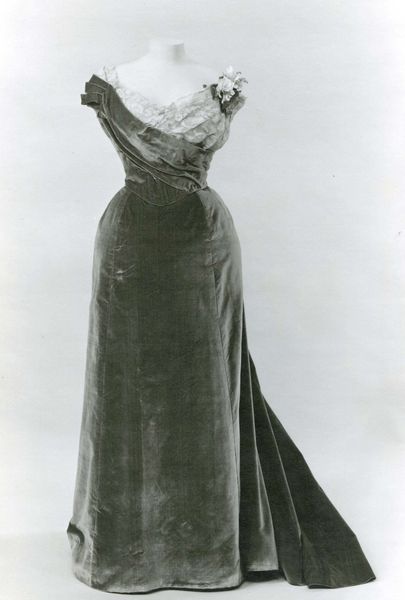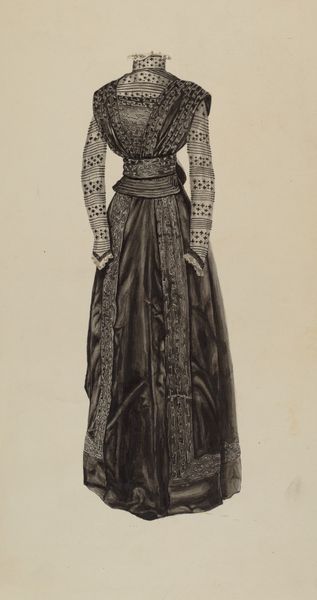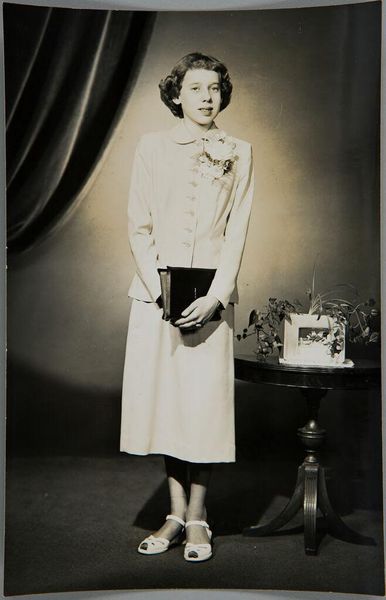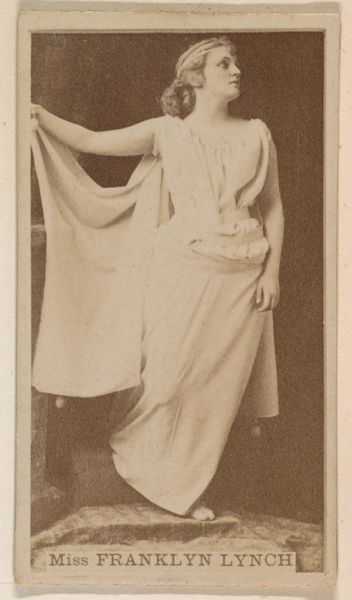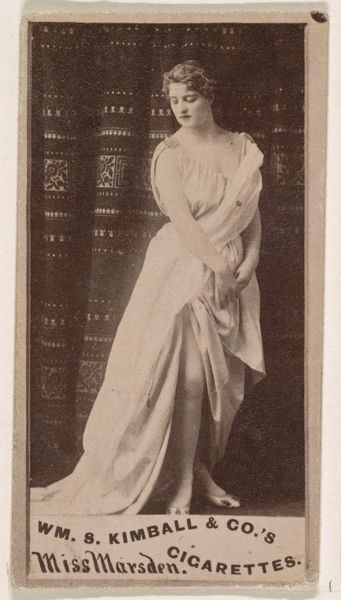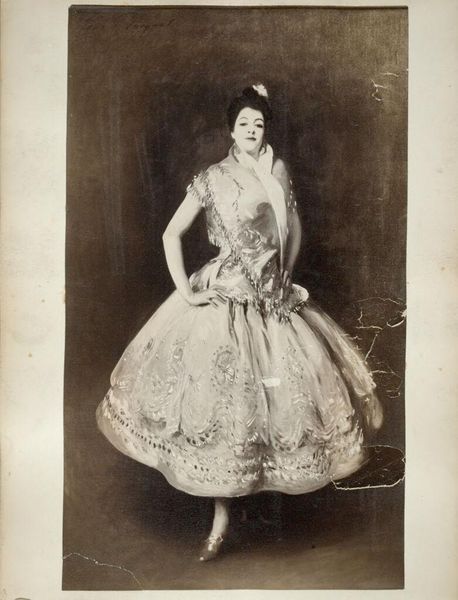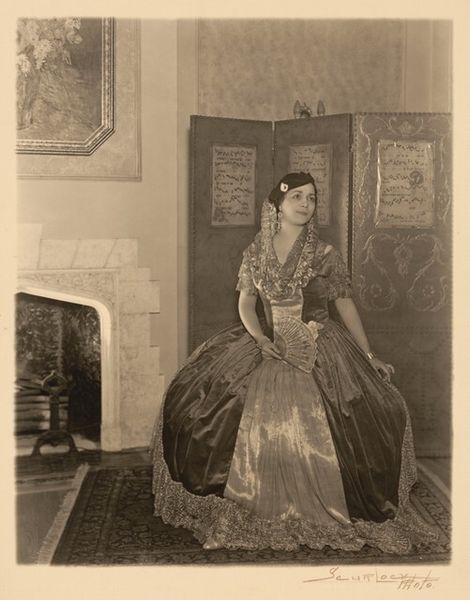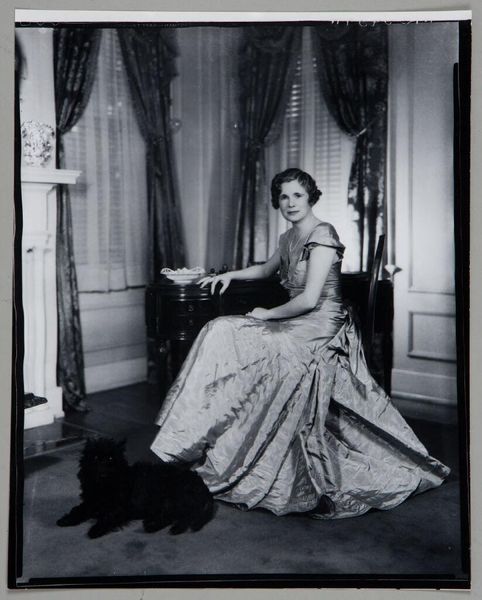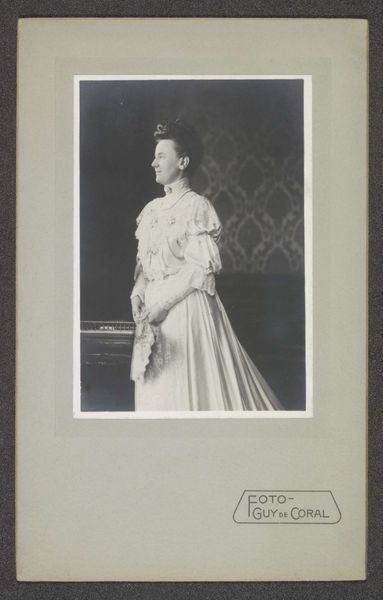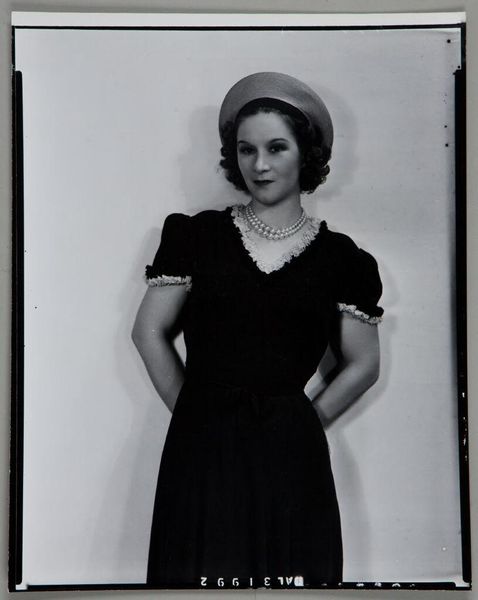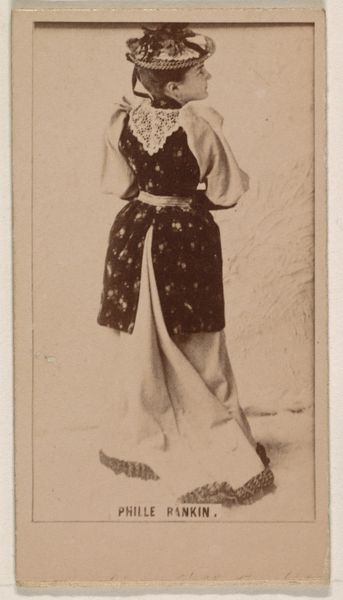
photography
#
portrait
#
wedding photograph
#
photography
#
historical photography
#
historical fashion
#
wedding dress
Dimensions: overall: 45.5 x 30.7 cm (17 15/16 x 12 1/16 in.)
Copyright: National Gallery of Art: CC0 1.0
Curator: Here we have a photograph, simply titled “Wedding Dress,” estimated to be from between 1935 and 1942. The photographer, unfortunately, remains anonymous. Editor: Oh, wow. My first thought? It feels… spectral. The fabric, almost ethereal, but the pose on that mannequin? Gives me a slight chill. Like peering into someone else’s memory of a wedding day, bittersweet, perhaps. Curator: I’m interested you say "spectral." The dress appears in this photographic medium, divorced from a body. The anonymous nature of the subject prompts us to examine weddings, particularly during this period, through a wider societal lens. Consider how access to resources and changing gender roles would impact such a rite. Editor: Absolutely. Though beyond the broader implications, you know, my eyes keep snagging on the details. The lace at the hem and those little floral accents. Each detail is beautiful and, dare I say, hopeful. I also wonder, was it typical at this period to display garments in this way, detached from a body? Curator: Excellent point. Depicting it on a mannequin offers insight into objectification and consumption in material culture, emphasizing idealization over individuality. How the dress itself transcends the bride, embodying aspirations tied up in gender and societal expectation. Editor: Right, because there's that tension: this object, meant to represent a deeply personal event, becomes something universally assessed and judged. It makes you question whose story we're really seeing in this photograph, doesn’t it? This notion almost eclipses the supposed 'joy' of a wedding. Curator: Indeed, it underscores the complexities woven into a seemingly straightforward image. Editor: In a way, thinking about those unseen figures allows space to consider one's personal ideas and memories linked to a wedding dress and how expectations could play into such a role. Curator: Absolutely, that is why the object continues to resonate even to this day, allowing these tensions to surface. Editor: It seems every generation needs its own re-interpretation, wouldn't you say?
Comments
No comments
Be the first to comment and join the conversation on the ultimate creative platform.
